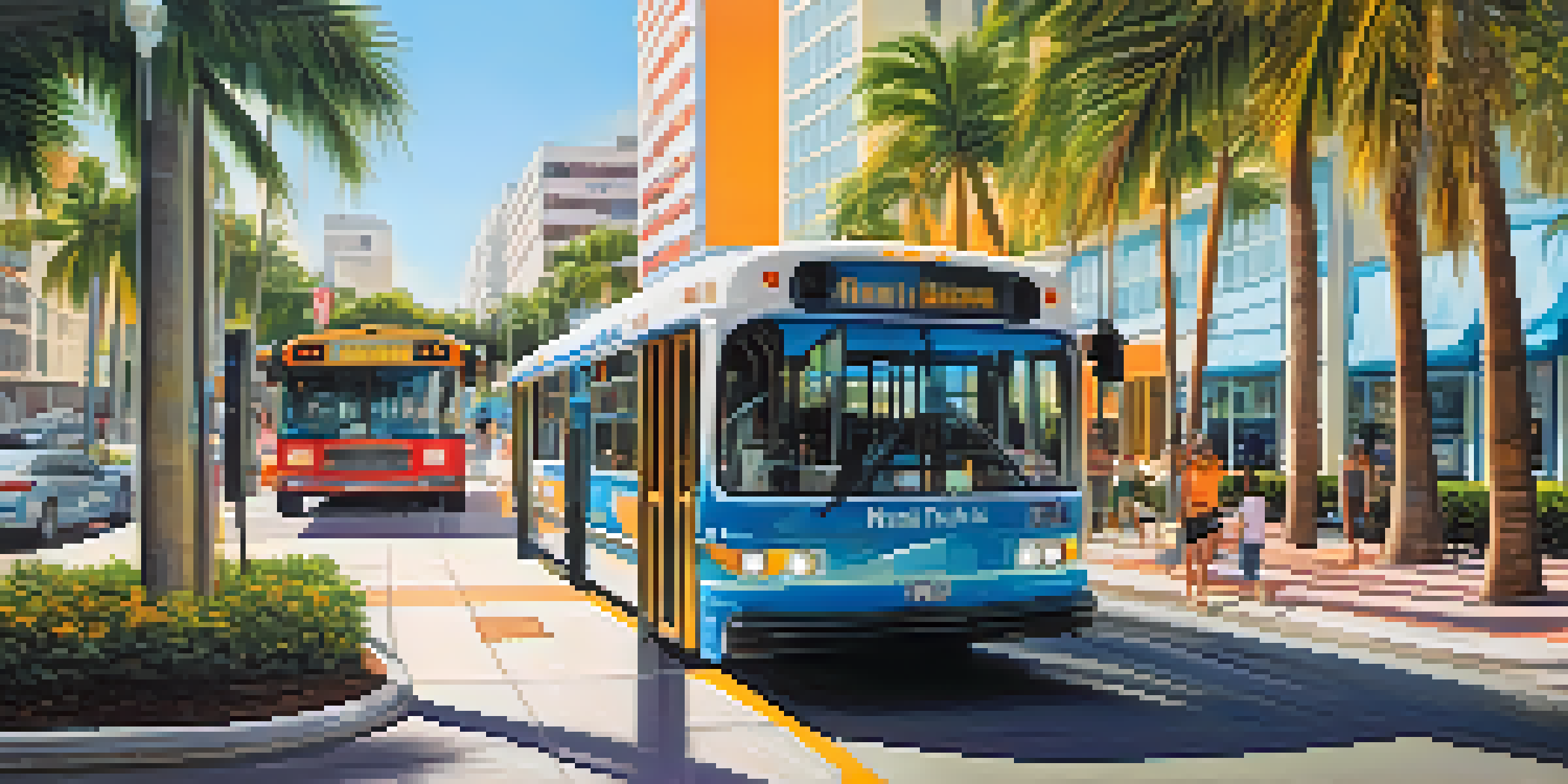Public Transit Accessibility in Miami: A Comprehensive Review

Overview of Public Transit in Miami
Miami's public transit system is a vibrant network that includes buses, Metrorail, and Metromover. With a diverse population and high tourist traffic, accessibility is crucial for all riders. Understanding the system's layout and options can greatly enhance the commuting experience. Let's dive deeper into the various modes of transportation available in this bustling city.
Importance of Accessibility in Transit Systems
Accessibility in public transit is not just a legal requirement; it's a vital aspect of urban mobility. It ensures that everyone, regardless of physical ability, can access essential services, jobs, and leisure activities. By creating an inclusive transit system, cities can promote social equity and enhance community interaction. Miami’s commitment to accessibility can significantly impact the quality of life for its residents.
Accessibility is Key to Transit Success
Ensuring public transit is accessible for all users promotes social equity and enhances overall community interaction.
Current Accessibility Features in Miami Transit
Miami's public transit system includes several features aimed at improving accessibility. This includes low-floor buses, elevators at train stations, and audio-visual announcements. These features make it easier for individuals with disabilities or mobility challenges to navigate the transportation network. Despite these advancements, there are still areas that require improvement and further attention.
Challenges Faced by Riders with Disabilities
While progress has been made, many riders with disabilities still face significant challenges. Inconsistent services, lack of information, and physical barriers can make commuting a daunting task. For example, some bus stops may not have proper ramps, creating obstacles for wheelchair users. Addressing these issues is essential for fostering a truly accessible transit environment.
Challenges Persist for Disabled Riders
Despite improvements, riders with disabilities still encounter obstacles like inconsistent services and physical barriers.
Community Feedback and Involvement
Community feedback plays a crucial role in improving transit accessibility. Engaging with riders through surveys, public meetings, and focus groups helps transit authorities understand the real needs of the community. For instance, feedback might reveal the necessity for more accessible routes or better signage. Incorporating these insights not only enhances the system but also builds trust between the community and transit authorities.
Future Improvements and Plans for Miami Transit
Looking ahead, Miami has ambitious plans to enhance transit accessibility. Upcoming projects include expanding routes, upgrading facilities, and implementing technology for real-time updates. These improvements aim to create a more user-friendly experience for all riders. By prioritizing accessibility in future developments, Miami can set a benchmark for other cities to follow.
Future Plans Focus on Inclusivity
Miami's ambitious plans for transit enhancements aim to prioritize accessibility and create a more user-friendly experience.
Comparing Miami's Accessibility to Other Cities
When comparing Miami's public transit accessibility to other major cities, it’s clear there are both strengths and weaknesses. Cities like New York and San Francisco have long-established systems that cater to a diverse range of needs. However, Miami's unique geography and climate present specific challenges that require customized solutions. Learning from these comparisons can guide Miami in its quest for a more inclusive transit system.
Conclusion: The Path Forward for Accessible Transit
In conclusion, while Miami has made strides in public transit accessibility, there is still work to be done. Continuous evaluation, community involvement, and innovative solutions are essential for fostering a more inclusive system. As Miami grows and evolves, so too must its transit options to meet the needs of all residents. A commitment to accessibility will not only improve the transit experience but also enhance the overall quality of life in the city.